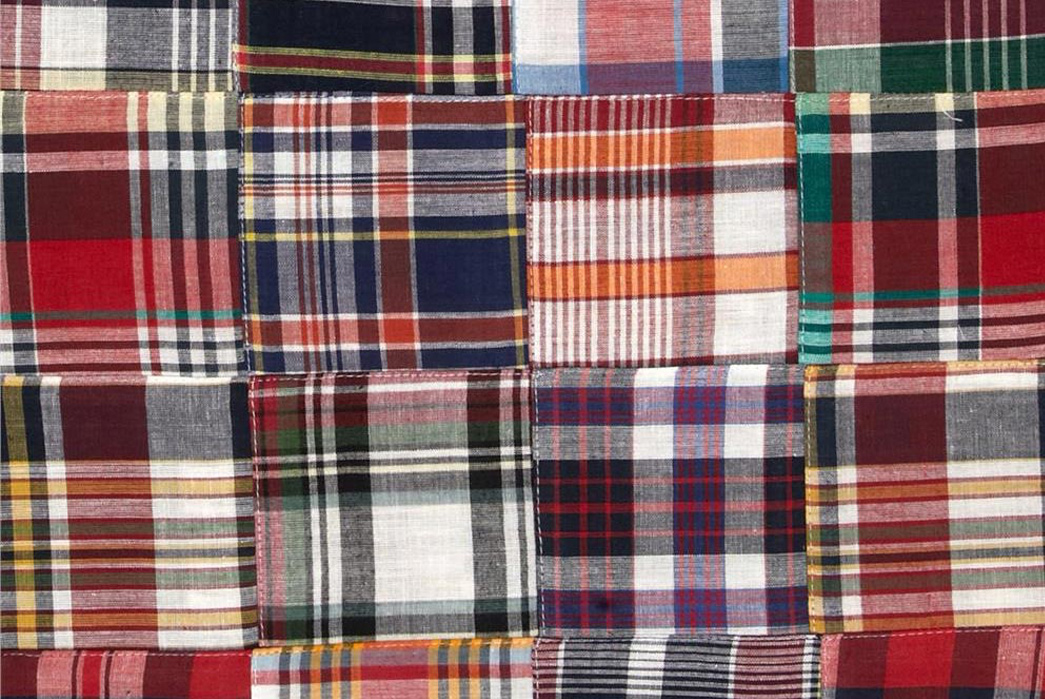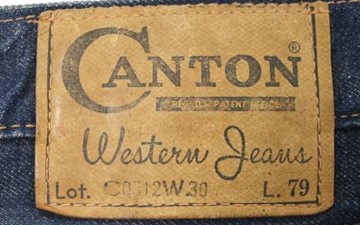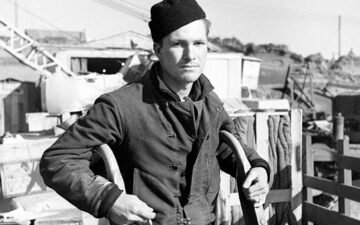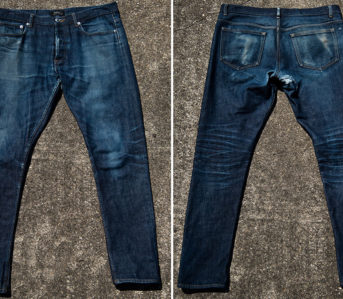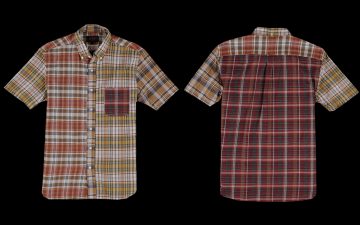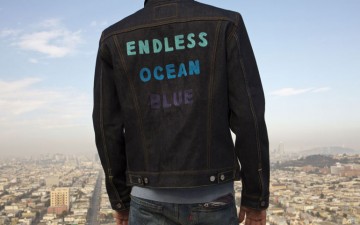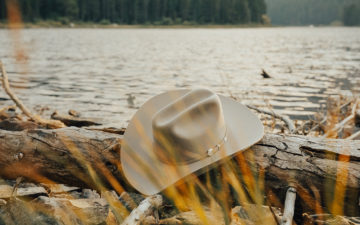Madras is a breathable, beautiful fabric that was enthusiastically adopted by America’s yuppies in the late 1950s and has remained a WASP-y summer essential ever since.
Its history, however, is fraught with imperialism, slave-trading, and even the naming of a certain famous American university. Madras, despite its enthusiastic reception by western colonial powers, remains a uniquely Indian invention, one that has adapted and morphed with changing tastes, but remains a testament to indigenous ingenuity and craftsmanship.
British “Discovery”
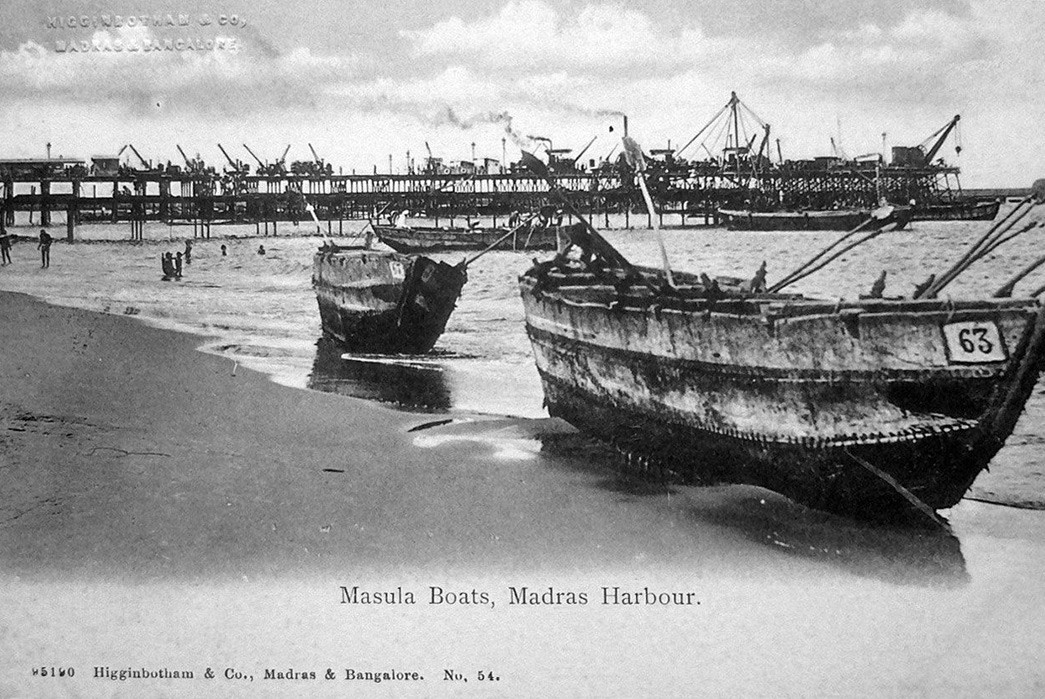
Old Madraspatnam. Image via 121 clicks.
At its best, the East India Company was the easily-dispatched villainous organization from Pirates of the Caribbean and at its worst, an actual British organization committed to plundering the natural wealth of England’s richest colony: India. The real-life version of this organization received its Royal Charter in 1600 and on its third round of expansion, set up shop in a colony called Armagon.
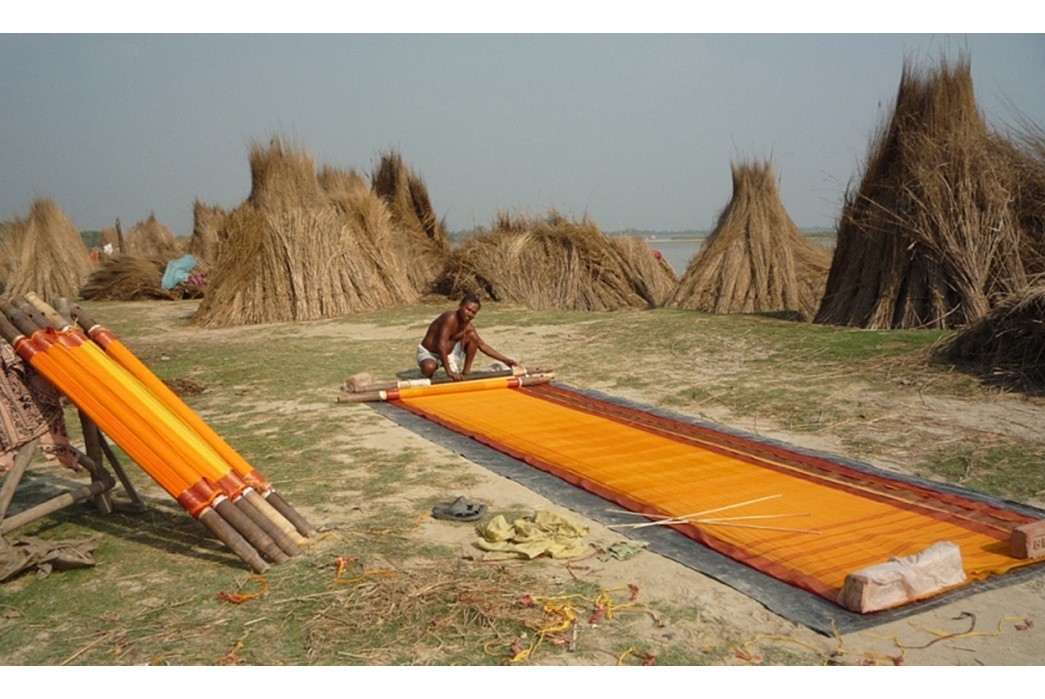
Woven Madras. Image via Styleforum.
The Trading Company was doing much of its business in spices and textiles and the fabrics they discovered in Armagon turned out to be of an unacceptably low quality for export. The company was in a bind and needed to establish a new trading post with a thriving textile industry. In 1637, Francis Day, an administrator of the company’s factory at Armagon began an expedition that would lead to the founding of the city of Madras.
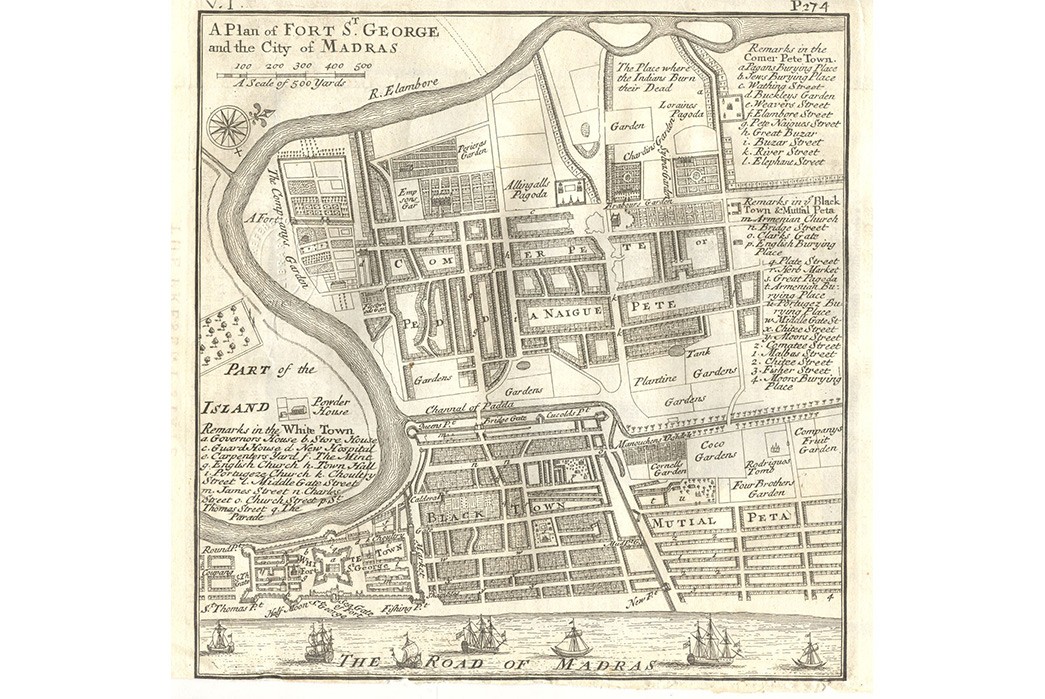
Fort St. George and the city of Madras. Image via Columbia.edu
Francis Day obtained a grant for the pre-existing village of Madraspatnam, leaving it under British control for at least two years. The port itself wasn’t exactly ideal, as many British naval officers pointed out, but the high-quality, cheap cotton in the area was certainly a draw.
The trading post of Madras and its accompanying military installation: Fort St. George were established in 1639. The English lured weavers and merchants from across the region with promises of exemption from tax duties and in so doing, obtained some of the best hand-woven fabric available on the market at the time.
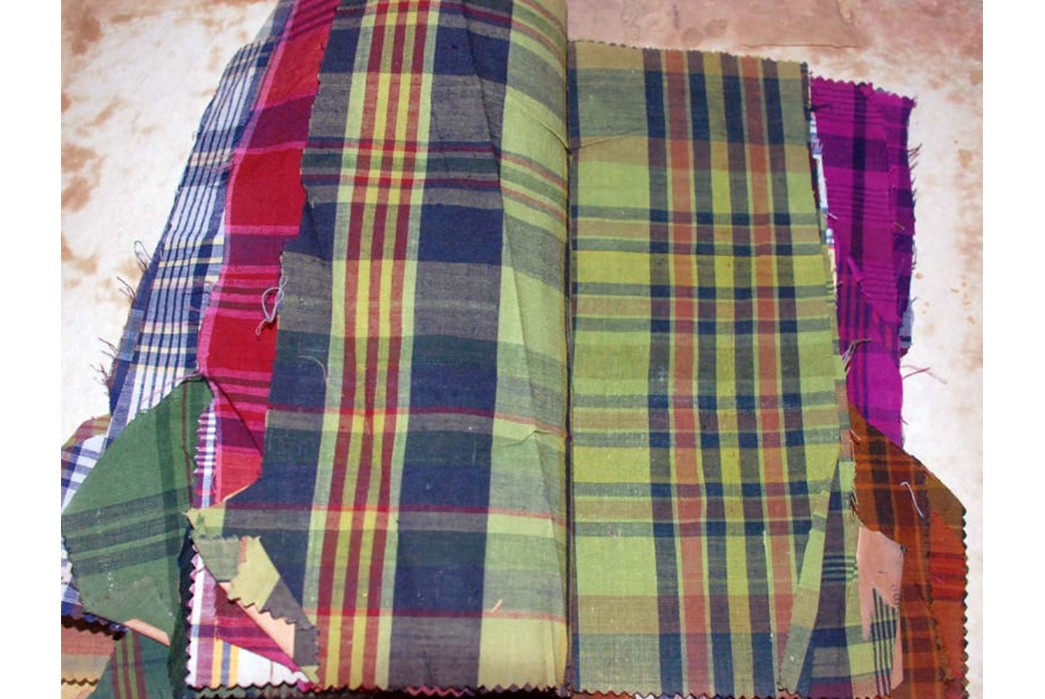
Modern Madras. Image via Gentleman’s Gazette.
The British made a fortune in Madras. First, by shipping the cheap, strong cotton, then by selling an un-dyed muslin version, and finally by recognizing the talent that had been under their noses all along. The people of Madraspatnam had long been famous for the loosely woven and meticulously yarn-dyed fabrics.
The fabric that came to be known as Madras is and was woven by hand, first embroidered with elaborate patterns and later in more refined prints, in which red and blue were some of the most popular colors. Rice gruel was used as an adhesive and boiling spring water was used to set the dyes, the water of each region leaving a slightly different hue.
Records show that even before European presence in the region, their brightly-colored fabrics were traded as far as Northern Africa and the Middle East in the 1400s. The sixteenth century saw this fabric refined to include more intricate dyeing processes and more complex patterns, but the Madras fabric was largely considered a working person’s material, nothing special.
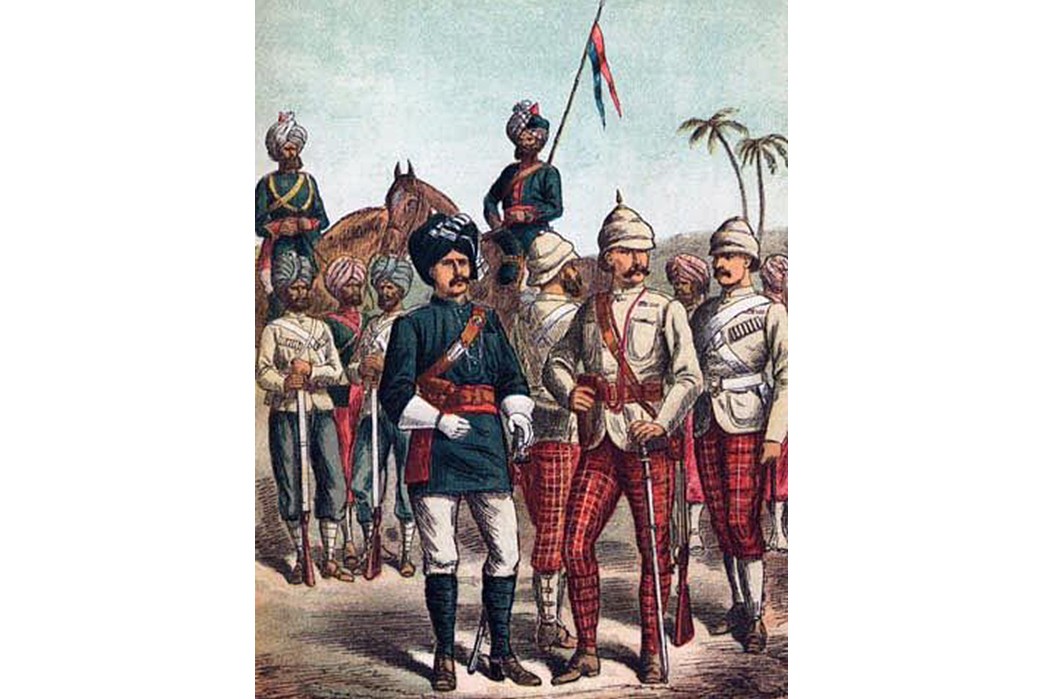
Tartan in the Colonies. Image via Pinterest.
By 1822, fabrics from Madras were mostly in various tartans, which had become popular after King George IV paid a visit to Scotland and found himself drawn to the pattern. The signature vibrant plaid of the Madras either comes from the presence of Scottish troops in the area, or simple Indian agency. It’s just as likely that Indian weavers had created a plaid pattern entirely on their own without any European interference, but as the plaid Madras fabric became a sensation back in Europe, the English did their best to take credit.
Madras in America Pt. 1
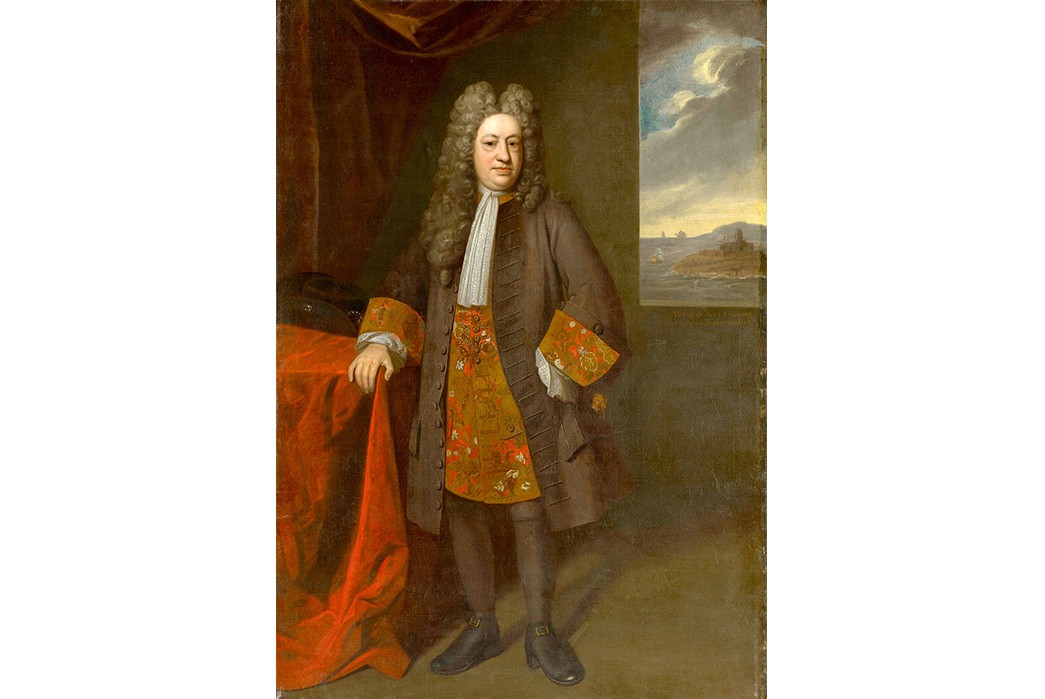
Elihu Yale. Image via Yale University Gallery.
The Collegiate School in New Haven, Connecticut was in dire straits when they reached out to the openly corrupt governor of Madras, India in 1718. The college wanted to erect a new building and turned to perhaps the worst-reputed man in the entire British Empire for help, Elihu Yale.
At the time of the college’s request, Yale had a notorious reputation for enforcing a law that decreed that at least ten slaves must be placed on every boat to Europe. So egregious were his misdeeds that the British Government had to step in to try to control his predilection for illegally abducting local children and selling them as slaves.
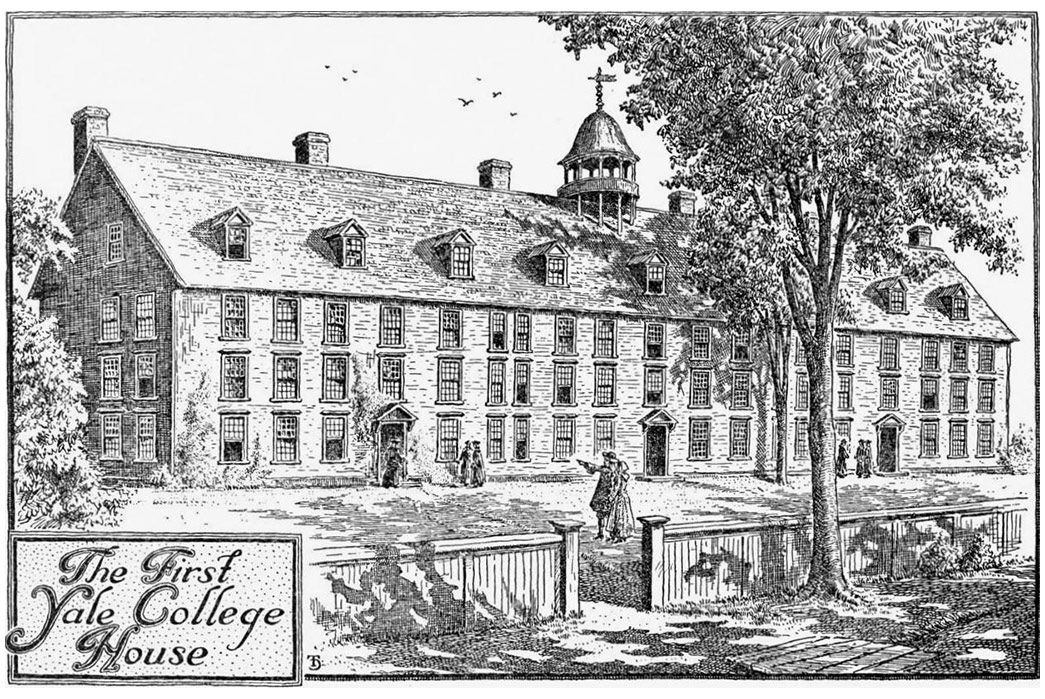
The house that Yale built. Image via Yale.
Anyway, Yale made a substantial donation to the ailing college. He sent money, books, paintings, and even yardage of the now-famous Madras fabric. The Collegiate School changed its name to honor the (frankly dishonorable) Elihu Yale and America had its first taste of the beautiful fabric that helped him earn his fortune.
Madras in America Pt. 2
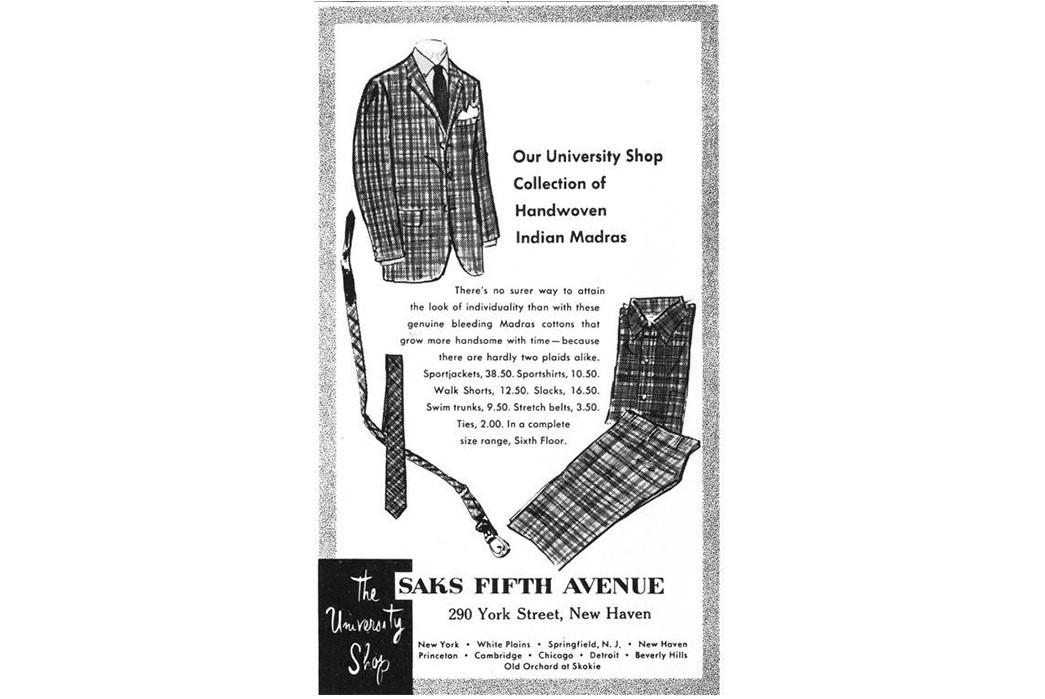
Saks ad. Image via Pinterest.
Madras made a splash in the states even after Elihu Yale’s first gift had been entirely used up. A Sears catalog from 1897 is one of the first tangible pieces of historical evidence about the fabric’s reception in America. People evidently took to the stuff because by 1919, the New York Times was reporting a shortage in the U.S.
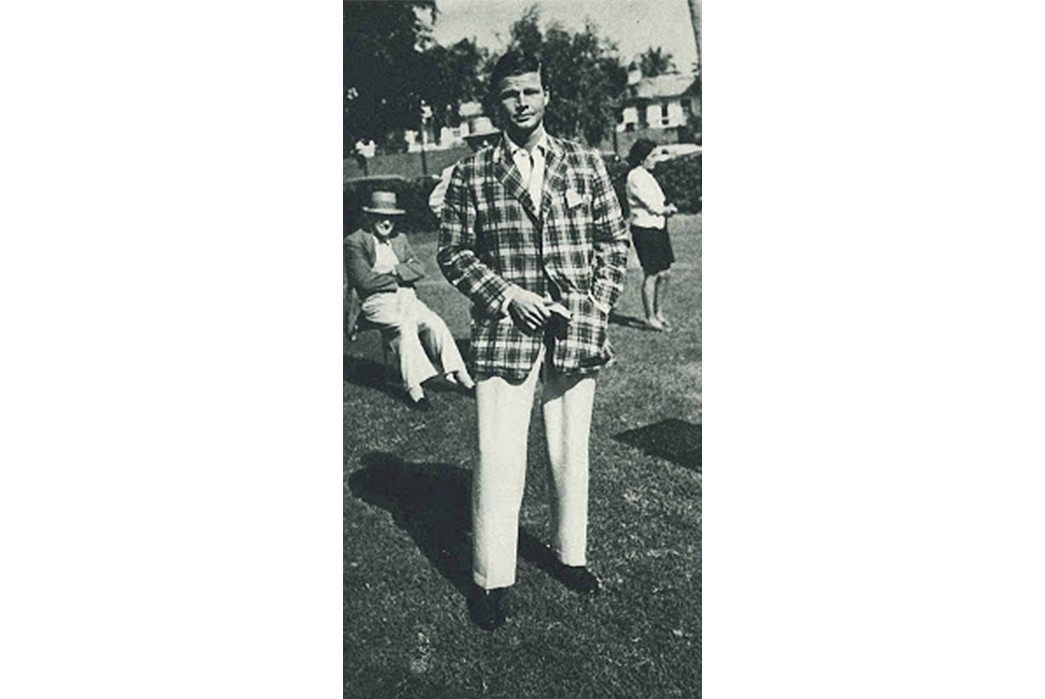
Madras Blazer featured in Gentry Magazine 1953. Image via Gentry.
The easy-wearing, colorful fabric remained an affectation of America’s rarefied leisure class. Many young men throughout the 1930s and 40s discovered Madras vacation wear while on trips to the English-controlled Bahamas. The simple, hand-woven, vegetable dyed fabric from modern-day Chennai, India slaked its wearer’s desire to look and feel like colonial aristocracy.
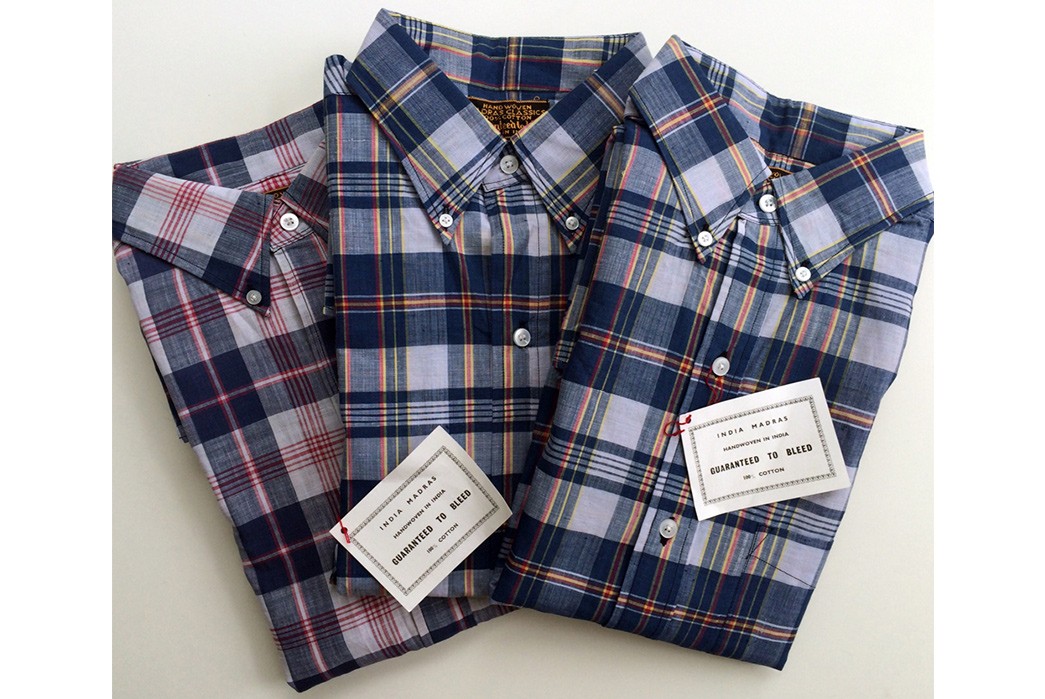
“Guaranteed to Bleed.” Image via Weejun.com
Madras’ big moment came with a 1958 fiasco when a fabric exporter failed to explain to Brooks Brothers that the 10,000 yards of Madras they’d bought were going to fade. When consumers all over the country began angrily writing to Brooks Brothers complaining that their new jackets and trousers were fading and bleeding, the company summoned the exporter, Mr. Nair, to the United States to punish him.
But Nair deftly redirected their anger with an interview with Seventeen Magazine, in which he lauded the fading quality of this miracle fabric from India. Add some coverage by Esquire and Brooks Brothers had a huge phenomenon on their hands. Advertisers started praising the “marvelously muted” and “dustily well-bred” qualities of the Madras trousers and jackets. Before beat-up jeans were considered acceptable, a well-faded “Guaranteed to Bleed” Madras shirt conveyed a certain nonchalance that Ivy Leaguers loved. The reactive, unstable organic dyes that were nearly Madras’ downfall were eagerly accepted and Madras proved an enduring American classic.
Madras Offerings Today
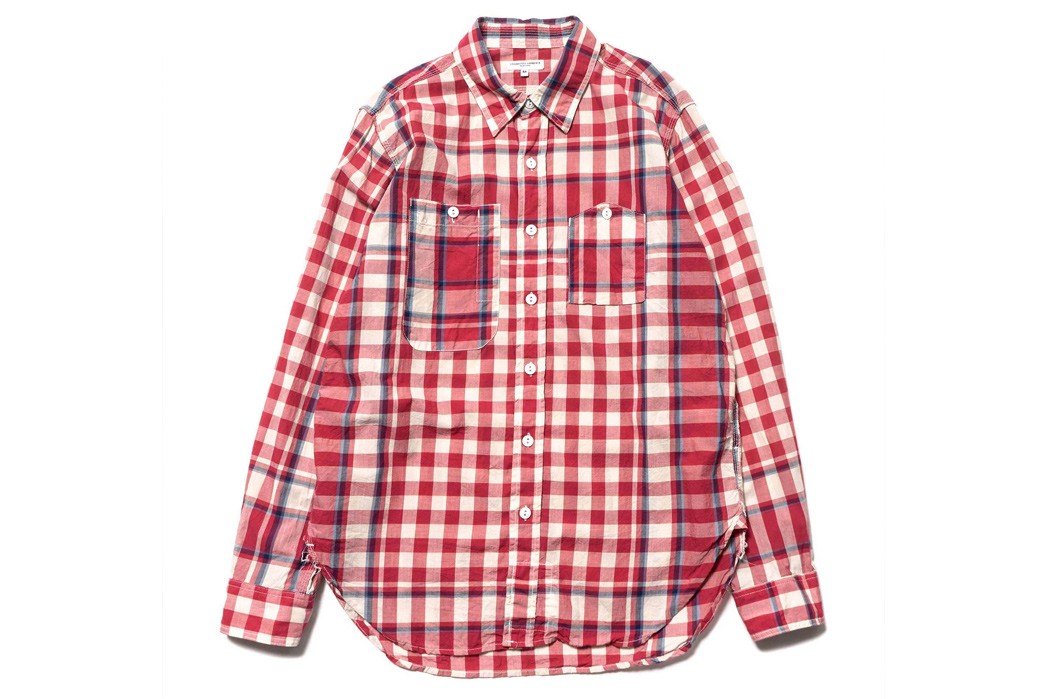
You can still find the bright patterned plaids popping up at J.Crew and Brooks Brothers locations across America every spring. And on the Heddels end of the market, you can find offerings from brands like Engineered Garments (above at Haven), Gitman Bros. Vintage, The Hill-Side, Tradlands, and Beams.
Lead image via He Spoke Style.

